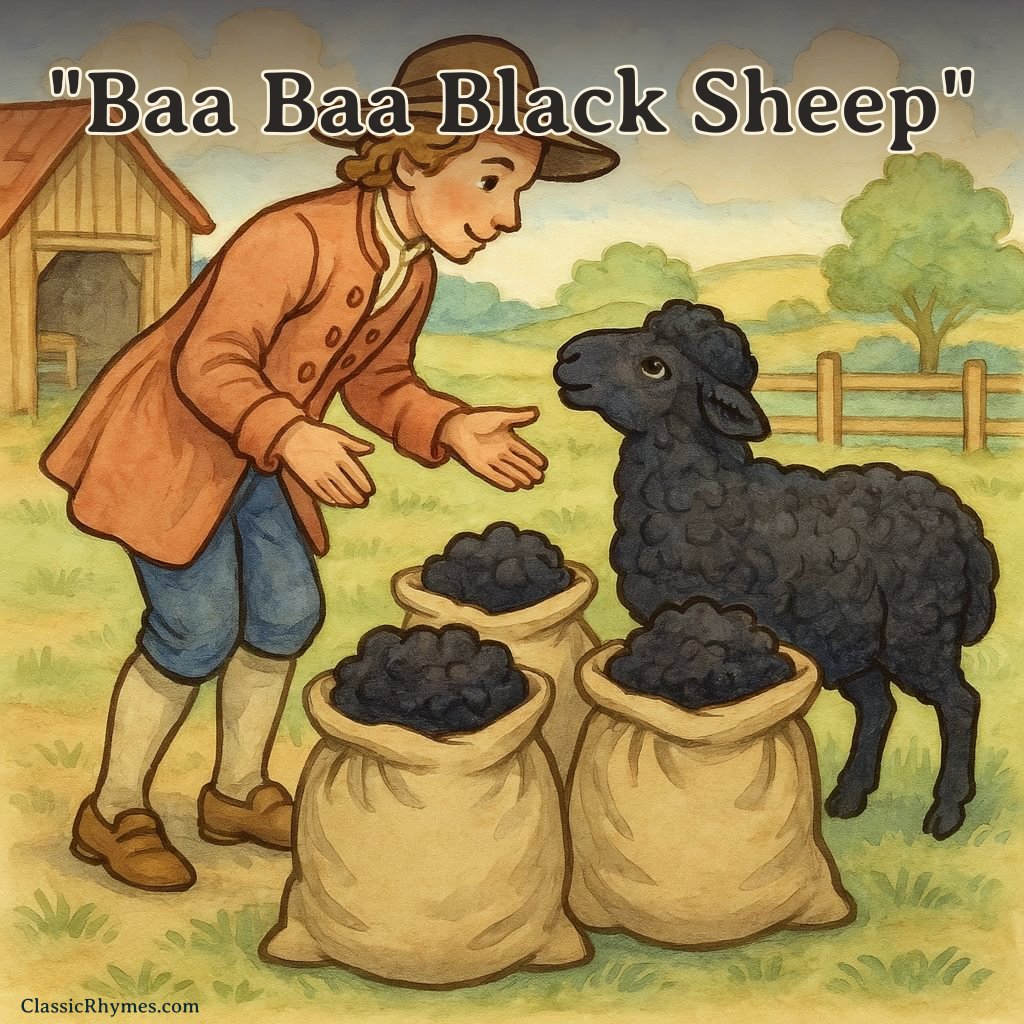Baa Baa Black Sheep
This classic English nursery rhyme, first printed in 1744, takes the form of a dialogue between a child and a black sheep concerning the distribution of its wool. The melody is the same as that used for “Twinkle, Twinkle, Little Star” and the “Alphabet Song”.
Baa, baa, black sheep,
Have you any wool?
Yes sir, yes sir,
Three bags full;
One for the master,
And one for the dame,
And one for the little boy
Who lives down the lane.
Print or Save This Rhyme
Download PDFRecitals
Listen as female American:
Listen as male American:
Listen as told in a story:
What is the Meaning of the ‘Baa Baa Black Sheep’ Nursery Rhyme?
“Baa Baa Black Sheep” is one of the most well-known English nursery rhymes, teaching children about sharing and traditional rural life. The rhyme’s repetition and simple structure make it memorable and easy for children to recite and sing. It is sometimes interpreted as a commentary on the distribution of resources (wool), referencing how the proceeds from wool sales were divided.
History and Origin of the Rhyme
The earliest printed version dates from around 1744 in “Tommy Thumb’s Pretty Song Book.” Its words have remained largely unchanged for over two centuries, though alternate endings occasionally appear in old collections. The tune is a variant of the French melody “Ah! vous dirai-je, maman”, also used for “Twinkle, Twinkle, Little Star” and “The ABC Song”.
Time Period
First documented in the mid-18th century, the rhyme has since appeared in countless nursery rhyme collections and is sung internationally.
Historical or Cultural Notes
Some interpretations suggest the rhyme alludes to the medieval “Old Custom” wool tax, which required one-third of wool profits to go to the king, the church, and the farmer. While debated, this theory reflects longing for fairness in resource division, but historical evidence is inconclusive. More recently, attempts to link the rhyme to issues of race or the slave trade have been widely dismissed by scholars.
Why It Became Popular
The rhyme’s musical repetition, animal theme, and storyline about resource sharing contributed to its enduring appeal for families and educators. Its melody is also shared with other popular children’s songs.
Notable Variants
Versions from the 18th century may end with “none for the little boy who cries in the lane,” reflecting changing attitudes about sharing and privilege.
Structure, Style, and Themes
Structure and Style
- Meter: Trochaic, rhythmic, ideal for young children
- Rhyme Scheme: AABCCDB
- Line Count: Eight lines (modern version)
- Style Notes: Simple, melodic, repetitive structure
Themes
- Sharing and fairness
- Agricultural trade
- Rural life and community
Language Notes
Uses basic vocabulary suitable for toddlers, animal sounds (“baa”), and conversational exchanges. The structure emphasizes oral tradition and accessibility.
Moral or Lesson
Encourages sharing and giving to multiple members of a community; sometimes interpreted as a lesson in generosity.

